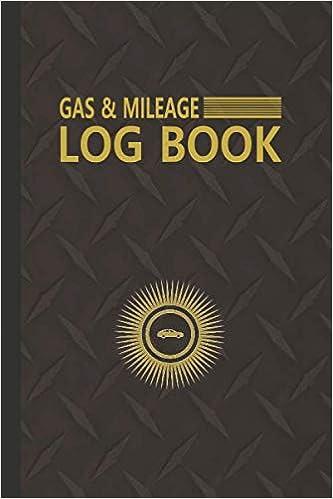Part 1 Liverpool Manufacturing Limited Liverpool Manufacturing Limited developed the following standard costs for direct material and direct labour for one of their major products, the 45 litres heavy-duty plastic container. Each container requires the following: Types of Cost Standard quantity Standard price Direct materials 0.2 kilos 30 per kilo Direct labour 0.1 hours 17 per hour During June, Liverpool Manufacturing Limited produced and sold 10,000 containers using 2,100 kilos of direct materials at an average cost per kilo of 25 and 1,100 direct labour hours at an average wage of 16 per hour. Required: a) Calculate the following variances for June: i Direct material price variance ii. Direct material quantity variance iv. Direct labour rate variance v. Direct labour efficiency variance (4 marks) b) Briefly comment on the material and labour variances calculated in a) (4 marks) c) Evaluate the importance of standard costing in budgeting process within firms 13 marks) Part 2 Spanish Watch Company The Spanish Watch Company has two divisions and manufactures one type of watch. The two divisions are the production Division and the Package & Delivery Division. The production Division manufactures watches and then sells them to the Package & Delivery Division, which packs the watches and sells them to retailers. The market price for the Package & Delivery Division to purchase this watch is 40. Production's cost per watch are: Direct materials 6 Direct labour 7 Variable overhead Division fixed cost 2 5 Package & Delivery's cost per watch are: Direct materials Direct labour 3 Variable overhead Division fixed cost 4 16 Notes: Fixed costs shown above are per pair for 100,000 units. Required: a) Assume the transfer price for a watch is 160% of full costs of the Production Division and 100,000 watches are produced and sold to the Package & Delivery Division. What is the Production Division's operating income? (2 marks) b) If the Package & Delivery Division purchases 100,000 watches from production departments and sells to retailers at a price of 150 per watch, what is the operating income of Spanish Watch Company? c) If Production Division has excess capacity to produce 100,000 watches which it cannot sell externally, must it negotiate a transfer price below 40 per watch internally? If the production division cannot negotiate the appropriate transfer price with internal package and delivery division, what is the consequence of this? Explain. (3 marks) d) Calculate and compare the difference in overall corporate net income between Scenario A and Scenario B if the Production Division sells 100,000 watches to retailers for 120 per watch. a. Scenario A: Negotiated transfer price of 30 per watch. b. Scenario B: Market-based transfer price of 40 per watch. Explain fully. (3 marks) Part 3 Target costing A target cost is 'a product cost estimate derived by subtracting a desired profit margin from a competitive market price. (CIMA, 2005). Required: The target costing is cost management techniques, and discuss the advantages of using this technique within firms. (3 marks) Part 1 Liverpool Manufacturing Limited Liverpool Manufacturing Limited developed the following standard costs for direct material and direct labour for one of their major products, the 45 litres heavy-duty plastic container. Each container requires the following: Types of Cost Standard quantity Standard price Direct materials 0.2 kilos 30 per kilo Direct labour 0.1 hours 17 per hour During June, Liverpool Manufacturing Limited produced and sold 10,000 containers using 2,100 kilos of direct materials at an average cost per kilo of 25 and 1,100 direct labour hours at an average wage of 16 per hour. Required: a) Calculate the following variances for June: i Direct material price variance ii. Direct material quantity variance iv. Direct labour rate variance v. Direct labour efficiency variance (4 marks) b) Briefly comment on the material and labour variances calculated in a) (4 marks) c) Evaluate the importance of standard costing in budgeting process within firms 13 marks) Part 2 Spanish Watch Company The Spanish Watch Company has two divisions and manufactures one type of watch. The two divisions are the production Division and the Package & Delivery Division. The production Division manufactures watches and then sells them to the Package & Delivery Division, which packs the watches and sells them to retailers. The market price for the Package & Delivery Division to purchase this watch is 40. Production's cost per watch are: Direct materials 6 Direct labour 7 Variable overhead Division fixed cost 2 5 Package & Delivery's cost per watch are: Direct materials Direct labour 3 Variable overhead Division fixed cost 4 16 Notes: Fixed costs shown above are per pair for 100,000 units. Required: a) Assume the transfer price for a watch is 160% of full costs of the Production Division and 100,000 watches are produced and sold to the Package & Delivery Division. What is the Production Division's operating income? (2 marks) b) If the Package & Delivery Division purchases 100,000 watches from production departments and sells to retailers at a price of 150 per watch, what is the operating income of Spanish Watch Company? c) If Production Division has excess capacity to produce 100,000 watches which it cannot sell externally, must it negotiate a transfer price below 40 per watch internally? If the production division cannot negotiate the appropriate transfer price with internal package and delivery division, what is the consequence of this? Explain. (3 marks) d) Calculate and compare the difference in overall corporate net income between Scenario A and Scenario B if the Production Division sells 100,000 watches to retailers for 120 per watch. a. Scenario A: Negotiated transfer price of 30 per watch. b. Scenario B: Market-based transfer price of 40 per watch. Explain fully. (3 marks) Part 3 Target costing A target cost is 'a product cost estimate derived by subtracting a desired profit margin from a competitive market price. (CIMA, 2005). Required: The target costing is cost management techniques, and discuss the advantages of using this technique within firms









